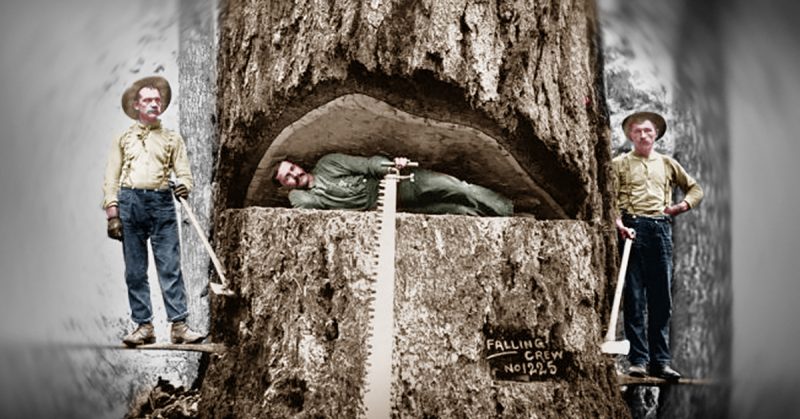The logging of the huge and ancient California Redwood forests in the past was certainly not an easy job. The dangerous occupation of felling and delimbing these behemoths of Mother Nature was designated to the famous old lumberjacks.
They lived in forest camps, spending months away from families and working hard day and night to transform the trees into an invaluable resource.
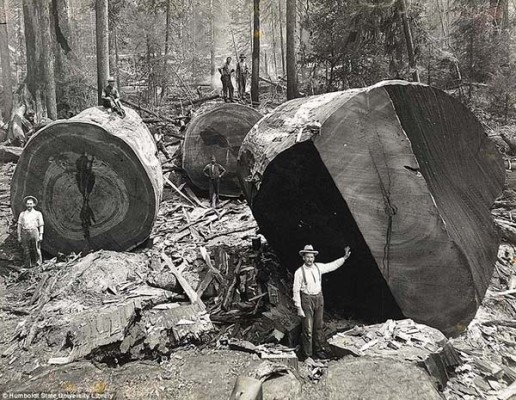
Lumberjacks took great pride in their work which regularly consisted of felling trees that stood over 300 feet tall. Tree trunks could measure over 15 feet in diameter and were so thick that a single tree provided enough timber for the construction of up to 20 houses.
The clear-cutting of giant sequoia peaked during the 19th century. Lumberjacks took on the monumental trees manually. Saws, wedges, and axes were used in combination to bring down the tree, as can be seen in the video footage below.
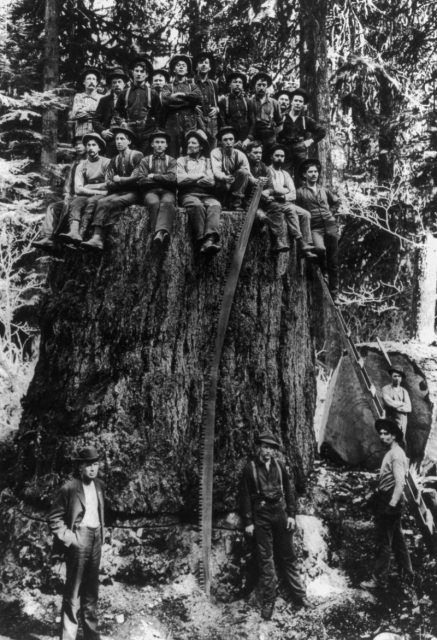
The process took time. The actual felling of a single giant redwood started with building scaffold that enabled loggers to climb up the trunk. Bulky cables and enormous pulleys were also needed to lift up junctions of the trees that weighed dozens of tons.
Lumberjacks also had to figure out the fall of each tree carefully so that it didn’t disrupt other trees close by, and to avoid any of the working men getting hurt or killed.
Almost always the lumberjacks were accurate to the inch but hazards were sometimes unavoidable. An estimated one in every 150 men working this profession lost their lives at work in the previous century. Such a death rate was higher than in most other occupations. To date, logging remains one of the deadliest professions even with the advent of modern technologies.
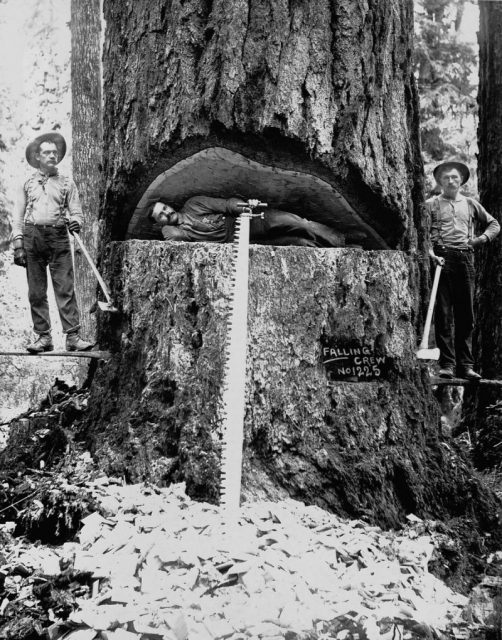
Depending on the location and workload, loggers either cut the trees into logs on the spot where the tree was fallen or they transferred them via rivers and railroads. Log flumes were constructed to transport the logs over hilly areas.
The wood was praised for its fire resistance and resilience against fungi and pests. Old-growth trees particularly retained such qualities. Cities were built and rebuilt with this type of timber. A spike in lumberjacking inescapably took place after the great earthquake and fire that wiped out San Francisco in 1906 and the city demanded a total rebuild.
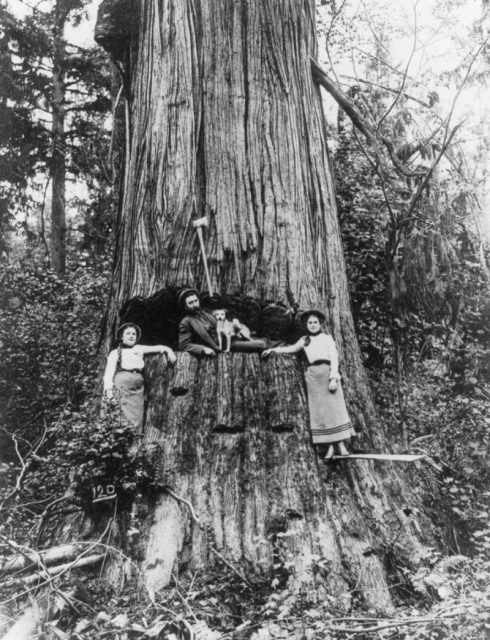
Lumberjack practices did not fail to impress the public imagination, too. Theme parks were accordingly built for entertainment and competitive sports also appeared such as log rolling on rivers. For a while it seemed this timber-powered culture would last forever.
However, as logging activities persisted for decades into the 20th century, the ancient redwoods forests have been reduced to almost nothing. Until the Redwood National Park was formed in 1968, almost 90 percent of the total ancient redwood tree population was clear-cut. Today only about 2 percent of the original 1.92 million acres remain.
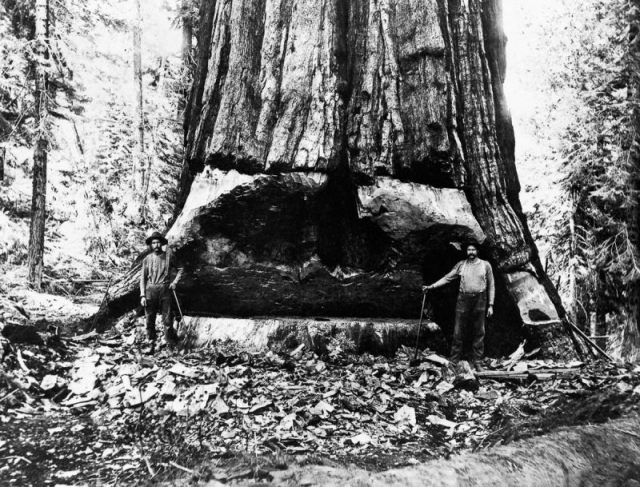
The average lifespan of a redwood tree is about 500 years, though some from the species are more than two millennia old. Those redwoods that remain still hide some of the tallest, oldest, most remarkable tree samples that can be found upon our planet.
Read another story from us: In Photos: The men who took on the giants and won
The featured footage of the lumberjacks working in California allows us to see an entirely different era and an entirely different way how we used these forests. While clear-cutting redwoods is now a bygone era, the historic footage is here to also remind us of an era that was vital to the development of the American West.
